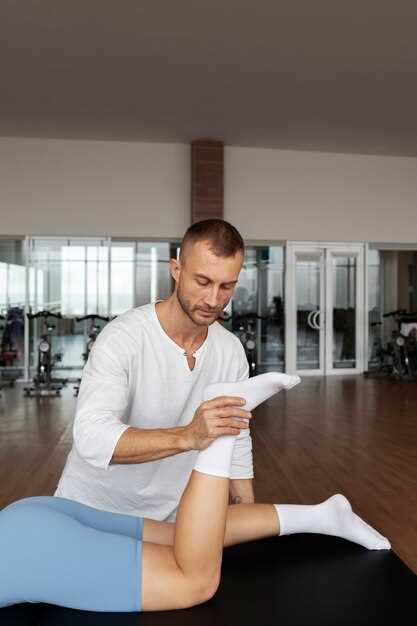
Achieving optimal lap times is a goal shared by every racing enthusiast, whether a seasoned driver or a newcomer to the sport. Among the myriad of factors influencing performance on the track, one aspect often overlooked is body position. The way a driver positions their body can significantly affect vehicle control, responsiveness, and overall speed.
Proper body alignment not only enhances a driver’s connection with the car but also plays a crucial role in weight transfer and balance during high-speed maneuvers. By understanding and implementing the correct body position, drivers can maximize their ability to react to the car’s behavior, ultimately leading to faster lap times. This article delves into the essential elements of body positioning and provides actionable tips for improving performance on the track.
The focus will be on key principles, from maintaining an optimal grip on the steering wheel to the significance of foot placement on the pedals. Each component contributes to a cohesive driving technique that elevates lap times and enhances overall racing experiences. By the end of this exploration, you will be equipped with the knowledge to refine your body position, leading to a noticeable improvement in your track performance.
Key Techniques for Optimizing Aerodynamic Posture

Optimizing aerodynamic posture is crucial for reducing drag and enhancing lap times in motorsport. Here are key techniques to achieve the desired body position.
1. Head Position: Keeping your head low and forward can significantly reduce air resistance. Aim to align your eyes with the road and maintain a streamlined silhouette. This minimizes the frontal area exposed to airflow, allowing for smoother movement through the air.
2. Upper Body Lean: Leaning your upper body forward helps to lower the center of gravity and decreases wind resistance. Adjust your torso angle to keep your weight balanced while ensuring your back remains straight to avoid fatigue and maintain control during turns.
3. Arm Placement: Position your arms closely to your body, avoiding unnecessary extension. Keeping your elbows bent and palms resting securely on the steering wheel allows for better control of the vehicle while reducing turbulence around your arms. This posture contributes to overall aerodynamics.
4. Leg Positioning: Your legs should be positioned in a way that they minimize drag while ensuring optimal pedal control. Keep your feet close together and maintain a natural, relaxed angle. This technique not only aids in aerodynamics but also enhances comfort during long races.
5. Utilizing Gear and Equipment: Wearing tight-fitting racing suits and using aerodynamic helmets can further reduce air resistance. Ensure that all gear is tailored to fit snugly without restricting movement, thereby supporting a streamlined body posture.
6. Adjusting Seat Position: Properly adjusting your seat enhances both comfort and aerodynamics. A forward-tilted seat position helps you maintain an optimal angle for body lean, reducing drag. Ensure that your legs can still comfortably reach the pedals to maximize responsiveness.
7. Wind Tunnel Testing: Utilizing a wind tunnel can provide valuable feedback on your posture. Through testing, you can identify specific areas of improvement, allowing for adjustments that may enhance your overall aerodynamic efficiency on the track.
Implementing these techniques can lead to significant improvements in lap times by optimizing your aerodynamic posture. Focus on each aspect diligently, and you’ll notice a difference in performance as you navigate the track more efficiently.
Adjusting Body Position for Cornering Precision
Cornering is a critical aspect of racing that can significantly impact lap times. An optimal body position helps maintain balance, enhances control, and allows for smoother transitions during turns. Proper adjustment of your body can lead to improved grip and stability, ultimately maximizing cornering speed.
Firstly, your body should lean into the turn. This position distributes your weight towards the inside of the corner, enhancing grip on the tires. Start by shifting your upper body and head towards the inside of the track while keeping your lower body stable on the bike. This technique lowers your center of gravity and helps maintain traction.
Additionally, the positioning of your arms is crucial. Keep your elbows slightly bent and positioned lower than your shoulders. This posture allows for better control over the handlebars and increases your ability to steer accurately through the corner. Avoid locking your arms, as this reduces feedback and hinders your ability to react to the bike’s movements.
Your legs also play an essential role in cornering precision. Position your inside knee close to the tank to secure your grip, while your outside leg should push against the footpeg. This promotes stability and enables you to steer with your body weight rather than relying solely on your hands. Ensure that your feet remain in contact with the footpegs to effectively control the bike throughout the turn.
A crucial aspect often overlooked is head positioning. Your head should naturally follow the line of vision towards the apex of the corner. By doing this, your body will instinctively align itself with the bike, improving overall balance and control. Keep your eyes focused ahead to anticipate the exit of the corner, facilitating a quicker acceleration once you exit.
Lastly, practice is vital. Repeatedly adjusting your body position during cornering will help develop muscle memory. Experiment with different positions during practice sessions to discover what feels most comfortable and effective for your riding style. Specific adjustments may vary based on the type of bike or the nature of the track.
In summary, achieving precision in cornering requires a thoughtful approach to body positioning. Leaning into the turn, adjusting arm and leg placements, focusing on head alignment, and consistent practice will collectively enhance your overall performance on the track.
Utilizing Weight Distribution for Enhanced Stability

Weight distribution is a crucial factor in achieving optimal stability and control during driving, particularly in motorsports and high-performance scenarios. By understanding and manipulating weight distribution, drivers can enhance their lap times significantly.
Here are key strategies for effectively utilizing weight distribution:
-
Balance Front and Rear Weight
- Maintain a neutral balance by adjusting body position to distribute weight evenly between the front and rear.
- A balanced distribution helps improve tire grip, especially during cornering.
-
Lower Center of Gravity
- Position your body lower in the vehicle to lower the center of gravity.
- A lower center of gravity minimizes body roll and enhances vehicle stability while cornering.
-
Shift Weight During Corners
- Lean into turns to shift weight towards the inside tires, providing additional grip where it’s needed most.
- Practice weight transfer techniques to optimize handling while negotiating tight corners.
-
Adjusting to Vehicle Dynamics
- Understand the specific weight distribution characteristics of your vehicle, as different setups will behave uniquely.
- Make use of tuning options available in performance cars to achieve desired weight distribution ratios.
By implementing these strategies, drivers can significantly enhance vehicle stability, resulting in better cornering speeds and improved lap times. Mastering weight distribution not only aids in achieving a smoother driving experience but also promotes greater confidence on the track.